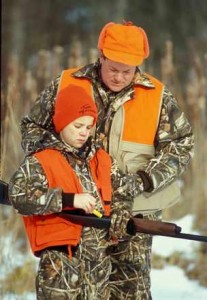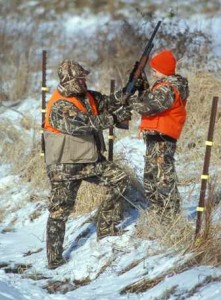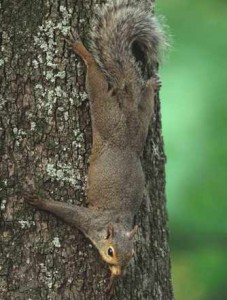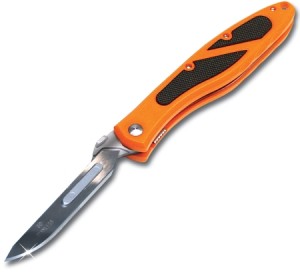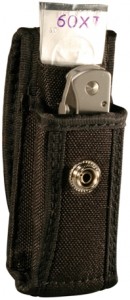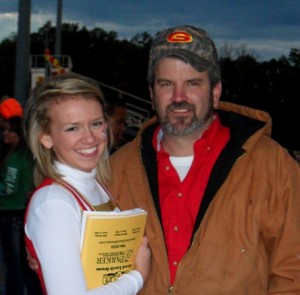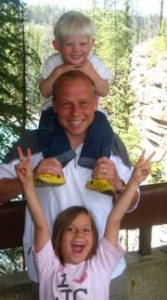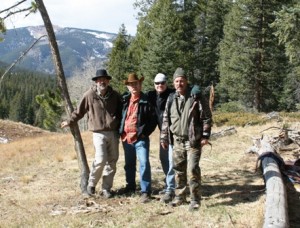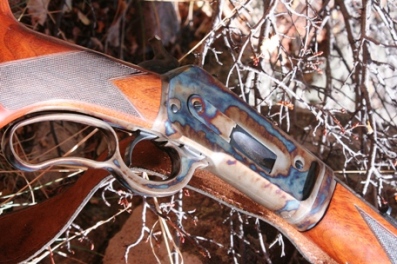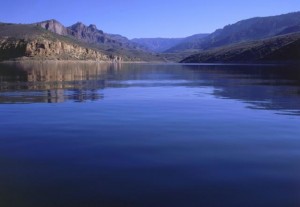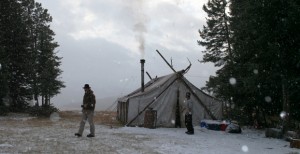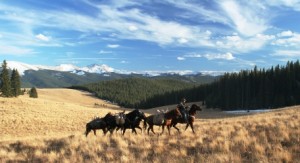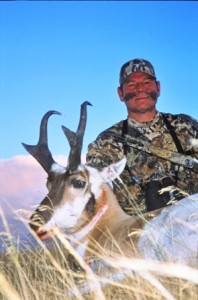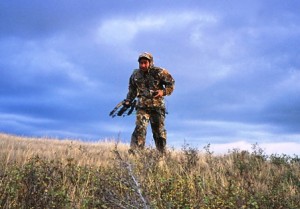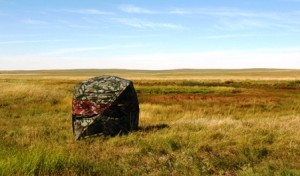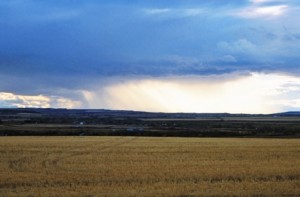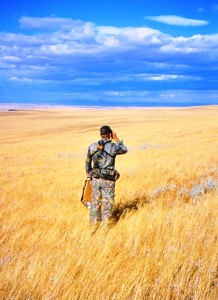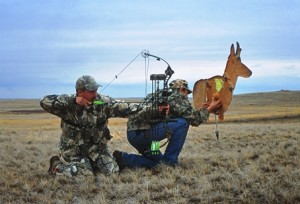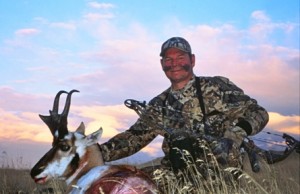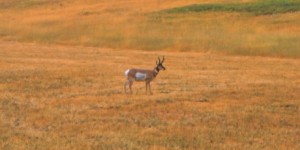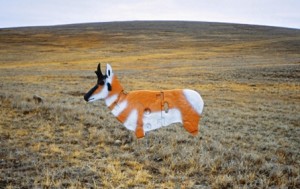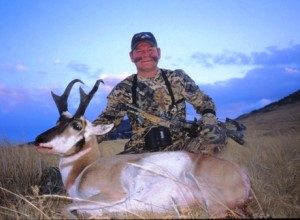 We were way up in Marquarte Hollow, and Old Maude, our basset hound, was running a rabbit. Old Maude was as slow as molasses going uphill, but she had a great nose, and the rabbit she was tracking only had to hop along slowly to keep ahead of her. It’s a good thing, because I was only ten years old at the time and had never killed a rabbit. Certainly I needed a slow running rabbit, or better yet, one that would sit still for me.
We were way up in Marquarte Hollow, and Old Maude, our basset hound, was running a rabbit. Old Maude was as slow as molasses going uphill, but she had a great nose, and the rabbit she was tracking only had to hop along slowly to keep ahead of her. It’s a good thing, because I was only ten years old at the time and had never killed a rabbit. Certainly I needed a slow running rabbit, or better yet, one that would sit still for me.
And that is exactly what happened. I was standing on a little rise, and the rabbit hopped out of the briers and sat down in front of me only 20 yards away. I raised my Savage .410 single barrel shotgun, took careful aim and fired! The rabbit ran a short distance and fell over! I had my first rabbit and was I excited! Shortly, my dad came over and he too, was excited to see I had finally connected. I’ve been hooked on various kinds of hunting ever since.
Becoming A Safe Hunter
I was fortunate to have a dad who loved to hunt, and of course he taught me everything he could about the sport. First of all—and still the most important element in becoming a hunter—was gun safety. My dad was a stickler for safety, but sadly, not all hunters are as careful as they should be. All states recognize this fact and now require a hunter education course which includes considerable instruction in gun safety and many other aspects of hunting.
In addition, the National Wild Turkey Federation JAKES program is an excellent program for youngsters 13 and younger to learn about gun and bow safety, plus many other cool skills they can take to the field to stay safe and have fun.
The National Rifle Association, meanwhile, has the nation’s most comprehensive youth hunting program. Their Youth Hunter Education Challenge program is open only to those individuals who have already completed a state hunter education program. Essentially, participants are taught under simulated hunting conditions to provide the best practical environment for reinforcing and testing a young hunter’s skills. This program covers rifle, bow and muzzleloader shooting, wildlife identification, map and compass usage, and much more.
While the bulk of beginning hunters come from hunting families, this is not always the case. Oftentimes youngsters from non-hunting families become interested in the sport. Also, non-hunting adults become interested in hunting and they, too, have to go through the learning process the same as the youth. So remember: regardless of the age of the beginning hunter, gun safety comes first, and it needs to be repeated over and over for the rest of your life.
Their First Gun
Always make sure you start kids, women, and even adult men out with a shotgun that doesn’t kick the stuffing out of them. Too much recoil can scare a new hunter, or cause them to flinch every time they shoot. A .410 gauge shotgun or 20 gauge shotgun is ideal for most hunters to start with. Many youth and lady models are now available from several manufacturers. My wife Carol started hunting when she was 35 years old and she has killed an incredible number of small game, turkey and white-tailed deer, all with a 20 gauge.
If the person is small, using a gun sled or other recoil absorbing device is an excellent method of teaching them proper firearm aiming and firing methods without them being “kicked”. This will allow them to enjoy shooting while they get used to the firearm.
Hunting Squirrels
Once the gun safety and hunter education is out of the way, the proper gun has been chosen and proper practice time put in, it’s time to go hunting. I’m going to briefly cover squirrel, rabbit and pheasant hunting in this article and I’m going to start out with squirrel hunting since I believe more can be learned about nature while squirrel hunting than by any other type of hunting. It also should be noted that great squirrel hunting is available in most of our states, and much of it on public land.
In most states squirrel seasons come in late summer or early fall, and typically the bushytails are cutting on shagbark or shellbark hickory. There are many other trees they feed on, such as oak, beech, pecan, walnut, black gum, and more, but hickory is their favorite. This is why it’s important for the parent, grandparent, uncle, or friend who is taking the youngster or beginning adult squirrel hunting, to show them how to identify every tree in the woods. This way the beginner learns to identify the trees from a distance and can hunt toward the trees the squirrels are cutting on.
Squirrels have sharp eyes and hearing, so obviously camo clothing and slow movements are the key to success. The “cuttings” from nuts can be heard dropping from the trees and squirrels can also be seen while they are out on a limb getting a nut or jumping from tree to tree. This is the time to show the beginning hunter how to slip up on a squirrel and get in position under the tree for a good, close shot.
Squirrel hunting is also a great time to help the beginning hunter identify all kinds of wildlife, insects and flowers, and help them understand how the woods they are hunting is laid out. Being alone in the woods is scary, and the new hunter needs guidance for many hunts. Once he becomes comfortable with an area, he can be turned loose on his own since he knows he won’t get lost.
As the season progresses, the new hunter will see how squirrels carry and bury nuts,
and if desired, in late season you can even take them out with a squirrel dog and
do some hunting.
Hunting Rabbits
The first animal I killed was a rabbit and I spent my youth hunting rabbits every fall, using both beagle and basset hounds. If possible, the beginner should hook up with someone who has a good rabbit dog. Some rabbits can be found in cutover woods, but usually they are in weed fields, fencerows, power lines, ditches, crop fields, or some other type of weedy or brushy cover. Rabbits feed during the night and sit in one spot during the day so they must be “kicked up”.

This youngster is excited about getting his first rabbit, and a good rabbit dog helped make it possible.
While the squirrel is usually sitting still for a shot, the rabbit is running full blast much of the time. Obviously it’s important to teach the beginner how important safety is in this sport, and that they must know where the dogs and other hunters are at all times. If hunting without dogs, when a rabbit is jumped, you have one opportunity to shoot him, and that’s it. With a rabbit dog, meanwhile, the rabbit is chased around for some time, possibly presenting shot after shot, and sometimes a slow moving or sitting shot.
Rabbit hunting is a fun, action packed sport that involves a lot of shooting, and most beginners enjoy it tremendously. Since it’s a winter sport, make sure the beginner has good boots, warm clothes, and is properly dressed in hunter orange.
Hunting Pheasants
Ring-necked pheasants are found in roughly 25 states. They are birds of the farm country and normally feed in farm fields early in the morning and evening, while hanging out at field edges, fencerows are other cover during the midday period. Ideal habitat includes 55 to 70 percent crop fields, preferably corn, soybeans, or small grains, with the remainder wetlands, undisturbed grasslands, and grassy or brushy fence lines and ditches.
Pre-season scouting will reveal where the pheasants are located, and the mentor can thereby put the beginner in an excellent position to get shots at the young, uneducated birds on opening day. When a gaudy rooster bursts from cover with a boisterous cackle, a new hunter can lose their composure, so they should be instructed not to rush the shot.
As the season goes on and crop fields are more open, pheasants will run from the hunter. At this time, a group of hunters can drive a field, and by placing posters at the end of the field they will still get some great shooting in. In good cover, birds will hold for dogs and this type of hunting is both exciting and provides good action for the hunter new
to the sport.
In this short piece I was only able to briefly touch on squirrel, rabbit and pheasant hunting, but the basics of getting started in each sport are the same. The parent, uncle, club member, or other experienced person setting up the beginner should be enthusiastic, patient and encouraging. Gun safety is still the number one priority, with woodsmanship, hunting techniques, rules of fair chase, and other educational aspects of the sport following. Teaching the beginner how to clean and prepare the game for the table should also be taught since squirrels, rabbits and pheasants are all outstanding eating.
Choke and Shot Size
For squirrels, number 6 or number 5 shot are the most common shots used, and a modified or full choke barrel are the most preferred chokes. What you use depends on how long of a shot you plan on taking.
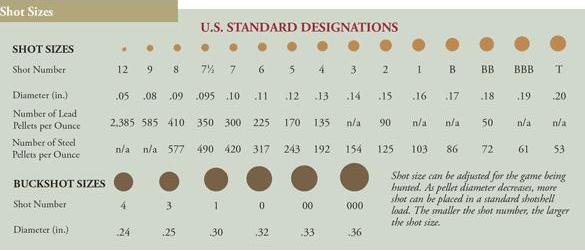 In rabbit hunting, because you are shooting at a running animal and need greater pattern coverage, a modified barrel is the most often used choke and number 6 shot is the most popular shot size. Some hunters use a more open barrel or a slightly different shot size.
In rabbit hunting, because you are shooting at a running animal and need greater pattern coverage, a modified barrel is the most often used choke and number 6 shot is the most popular shot size. Some hunters use a more open barrel or a slightly different shot size.
In pheasant hunting, the hunter is shooting at a flying bird, so good coverage is required from the gun’s pattern, with ample shot size to kill the bird cleanly. Modified and improved cylinder are the most used choke size, but a full choke is best for longer shots. Number 6 and 5 are the most used shot size since pheasants are rather hard to kill. The .410 gauge is a little small for consistently successful pheasant hunting, by the way.
Knife Safety
I mentioned in the article how important gun safety is while hunting, but knife safety is also important. Whether skinning a squirrel or rabbit, cleaning fish, or gutting a white-tailed deer, a nasty cut can occur if a knife isn’t handled properly.
Start a youngster out with a sharp knife. A sharp knife is safer than a dull one because a dull knife requires more cutting effort. Also teach kids to cut away from themselves and to not cut over their body, such as above a leg. Also teach them to have a “circle of safety” so they will not cut someone else who gets too close
to them.
Instruct them to never walk or run with an open knife. The knife should be closed or in a knife holder of some type. Teach them how to properly, and firmly, hold a knife. They should also be firmly and solidly positioned when cutting. Never cut while in an awkward position. Tell them how important it is to be able to see what they are cutting and the relative position of their non-knife hand. Many an adult has suffered a severe cut while gutting a deer because they were “blind cutting” to get out the deer’s intestines and weren’t aware of both the knife hand and non-knife hand location.
They should also be aware of the safety rules of passing a knife from themselves to another person. Also explain the proper way to open and close a knife since many kids cut themselves this way. After explaining all this, sit down with them and use the knife with them watching so they can learn the proper handling techniques. Then let them try using the knife for a while. Being a hunting mentor for a youth is important, but being a knife mentor is also important to their safety.
If the mentor makes the effort to spend ample time with the beginner, their effort will result in enriching another person’s life, for they will enjoy the wonder of the great outdoors for many years to come. And as they age, they will fondly remember the person who made it all possible. Change a life – take someone hunting.
38,859 total views, no views today


